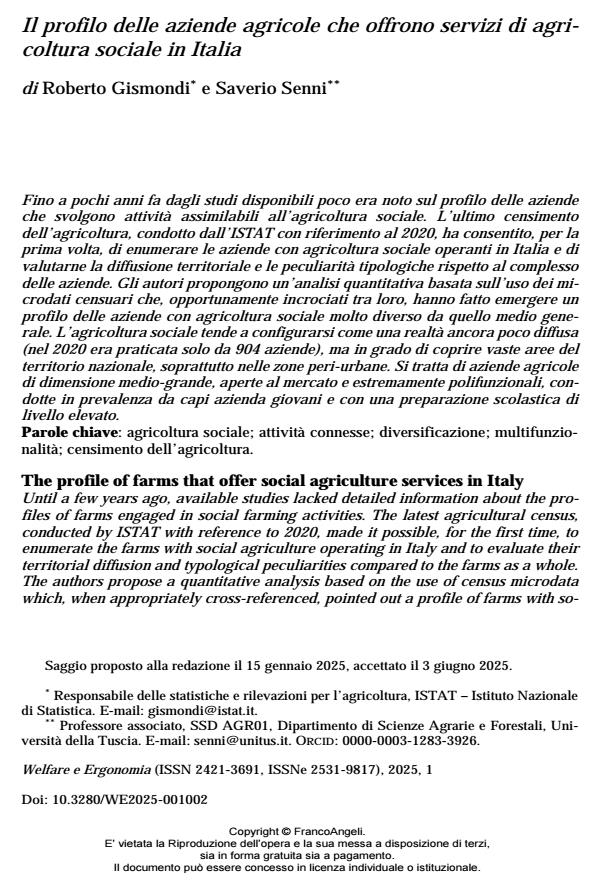The profile of farms that offer social agriculture services in Italy
Journal title WELFARE E ERGONOMIA
Author/s Roberto Gismondi, Saverio Senni
Publishing Year 2025 Issue 2025/1
Language Italian Pages 16 P. 21-36 File size 179 KB
DOI 10.3280/WE2025-001002
DOI is like a bar code for intellectual property: to have more infomation
click here
Below, you can see the article first page
If you want to buy this article in PDF format, you can do it, following the instructions to buy download credits

FrancoAngeli is member of Publishers International Linking Association, Inc (PILA), a not-for-profit association which run the CrossRef service enabling links to and from online scholarly content.
Until a few years ago, available studies lacked detailed information about the profiles of farms engaged in social farming activities. The latest agricultural census, conducted by ISTAT with reference to 2020, made it possible, for the first time, to enumerate the farms with social agriculture operating in Italy and to evaluate their territorial diffusion and typological peculiarities compared to the farms as a whole. The authors propose a quantitative analysis based on the use of census microdata which, when appropriately cross-referenced, pointed out a profile of farms with social agriculture that is very different from the general average one. Social agriculture tends to appear as a reality that is still not very widespread (in 2020 it was practiced by only 904 farms), but capable of covering large areas of the national territory, especially in peri-urban areas. These are medium-large sized agricultural holdings, open to the market and extremely multifunctional, mainly run by young farm managers with a high level educational background.
Keywords: social agriculture; related activities; diversification; multifunctionality; agricultural census.
Roberto Gismondi, Saverio Senni, Il profilo delle aziende agricole che offrono servizi di agricoltura sociale in Italia in "WELFARE E ERGONOMIA" 1/2025, pp 21-36, DOI: 10.3280/WE2025-001002